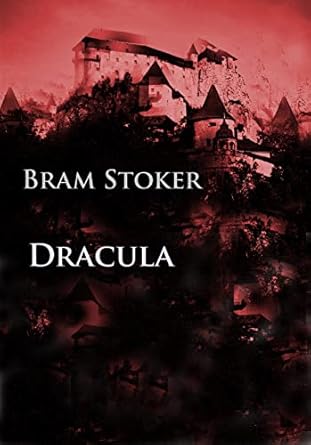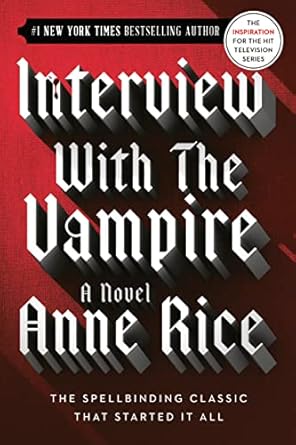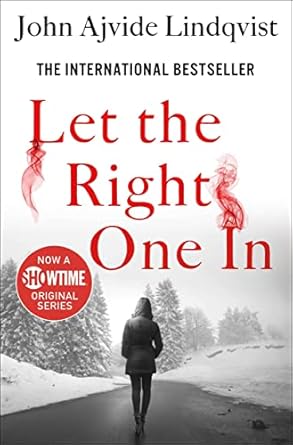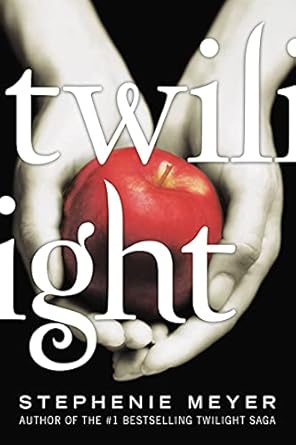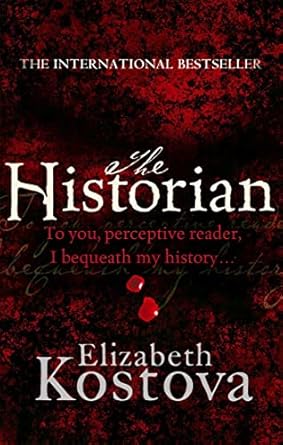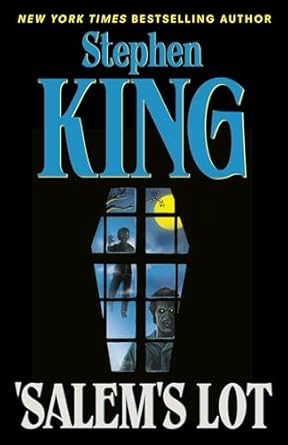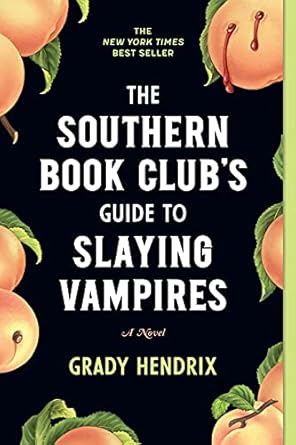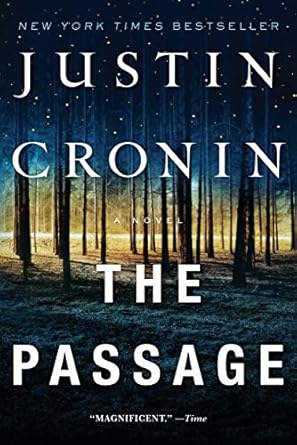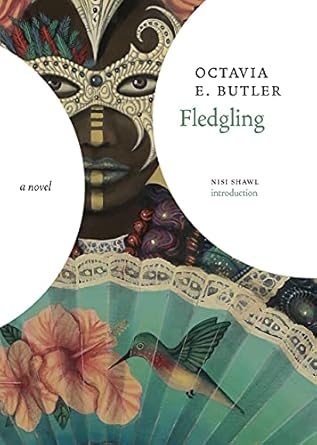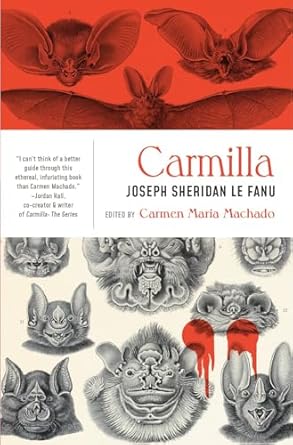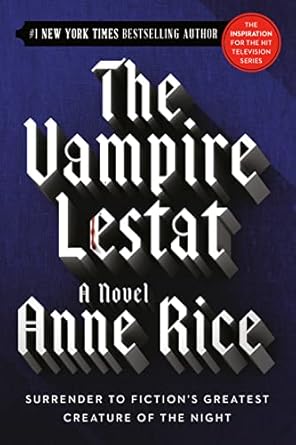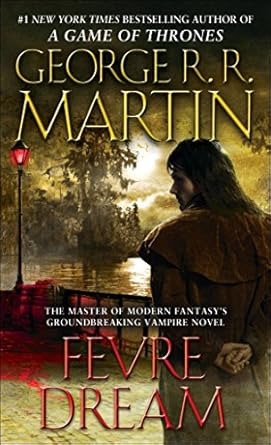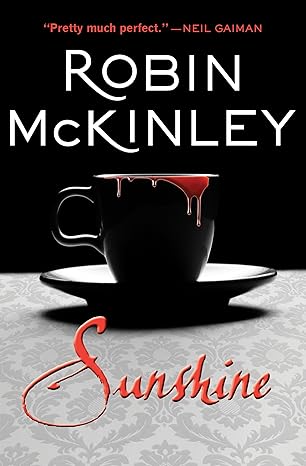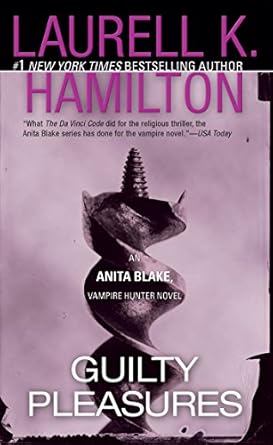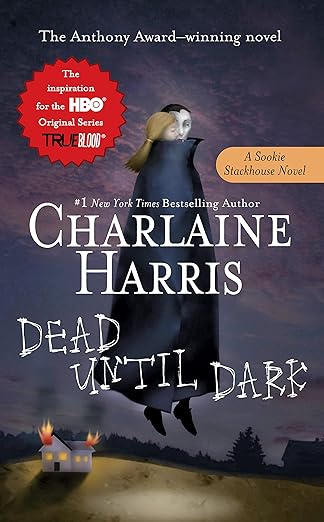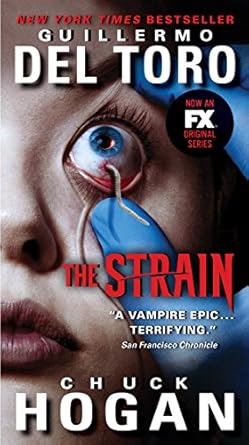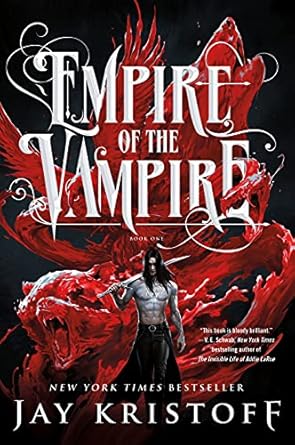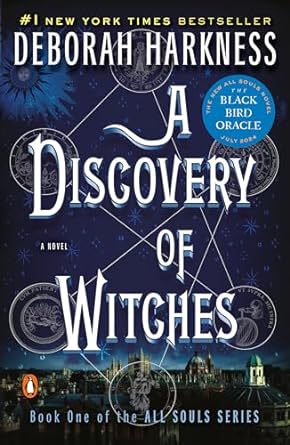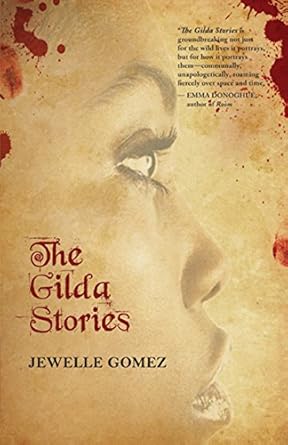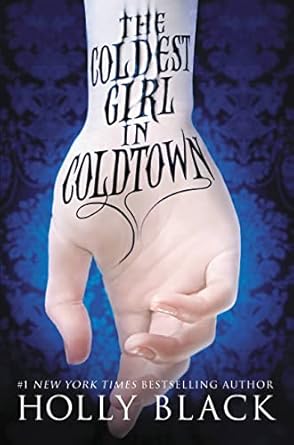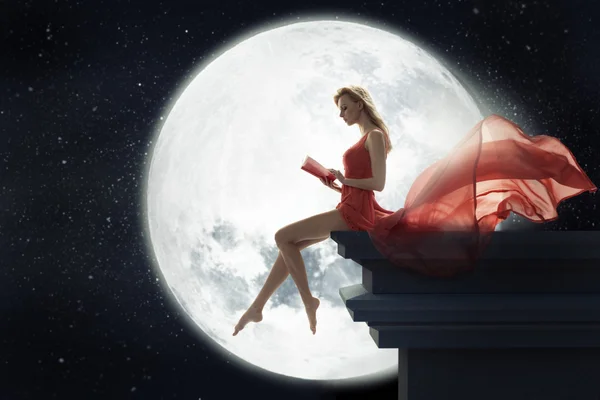Summary: In this article, I have compiled 20 of the best vampire books, perfect for horror lovers and dark fantasy fans alike. Here are my top 3 picks:
- Dracula by Bram Stoker
- Interview with the Vampire by Anne Rice
- Let the Right One In by John Ajvide Lindqvist
Vampire books blend horror, romance, and mystery, exploring immortality and the battle between good and evil. Classics like Dracula and Interview with the Vampire set the stage, while modern tales like Let the Right One In add fresh twists. Whether you love gothic chills or dark fantasy, these stories pull you into thrilling, eerie worlds where the undead roam.
TOP 20: Best Vampire Books
- Dracula by Bram Stoker
- Interview with the Vampire by Anne Rice
- Let the Right One In by John Ajvide Lindqvist
- Twilight by Stephenie Meyer
- The Historian by Elizabeth Kostova
- Salem’s Lot by Stephen King
- The Southern Book Club’s Guide to Slaying Vampires by Grady Hendrix
- The Passage by Justin Cronin
- Fledgling by Octavia E. Butler
- Carmilla by Sheridan Le Fanu
- The Vampire Lestat by Anne Rice
- Fevre Dream by George R.R. Martin
- Sunshine by Robin McKinley
- Guilty Pleasures by Laurell K. Hamilton
- Dead Until Dark by Charlaine Harris
- The Strain by Guillermo del Toro & Chuck Hogan
- Empire of the Vampire by Jay Kristoff
- A Discovery of Witches by Deborah Harkness
- The Gilda Stories by Jewelle Gomez
- The Coldest Girl in Coldtown by Holly Black
1. Dracula
- Author: Bram Stoker
- About: The classic tale that introduced Count Dracula, detailing his move from Transylvania to England in pursuit of new blood and the ensuing battle with Professor Van Helsing and his companions.
- Style of Writing: Epistolary format, utilizing letters, diary entries, and newspaper articles to weave a suspenseful narrative.
- Length: Approximately 160,000 words.
- Year Written: 1897.
- Emotional Impact: Leaves a lasting impression with its atmospheric tension and exploration of fear and the unknown.
- Difficulty Level: Moderate; Victorian-era language may require attentive reading.
- Why Read It: As the cornerstone of vampire literature, it offers insight into the origins of modern vampire myths and remains a compelling horror story.
2. Interview with the Vampire
- Author: Anne Rice
- About: A mesmerizing narrative where vampire Louis recounts his centuries-long life, exploring themes of immortality, loss, and the nature of evil.
- Style of Writing: Lush, descriptive prose that delves deep into character introspection.
- Length: Approximately 130,232 words.
- Year Written: 1976.
- Emotional Impact: Profoundly moving, it challenges readers to empathize with its immortal protagonists.
- Difficulty Level: Moderate; rich vocabulary and complex themes.
- Why Read It: Revolutionized vampire fiction by presenting vampires as deeply complex and emotionally tormented beings.
3. Let the Right One In
- Author: John Ajvide Lindqvist
- About: Set in 1980s Sweden, it tells the story of a bullied boy who befriends a mysterious girl, only to discover she's a vampire.
- Style of Writing: Dark, atmospheric, and unflinchingly explores human and supernatural horrors.
- Length: Approximately 145,000 words.
- Year Written: 2004.
- Emotional Impact: Haunting and poignant, it lingers in the reader's mind long after finishing.
- Difficulty Level: Moderate; deals with mature and disturbing themes.
- Why Read It: Offers a unique and gritty take on vampire mythology intertwined with a touching human story.
4. Twilight
- Author: Stephenie Meyer
- About: A teenage girl named Bella Swan falls in love with Edward Cullen, a vampire, leading to a series of challenges and adventures.
- Style of Writing: Simple, first-person narrative focusing on romance and personal growth.
- Length: Approximately 119,000 words.
- Year Written: 2005.
- Emotional Impact: Engaging for its target audience, evoking feelings of first love and adolescent angst.
- Difficulty Level: Easy; accessible language suitable for young adults.
- Why Read It: Became a cultural phenomenon, offering a modern romantic twist on vampire lore.
5. The Historian
- Author: Elizabeth Kostova
- About: A young woman discovers her father's quest to find the real Dracula, leading her on a historical journey across Europe.
- Style of Writing: Richly detailed, blending historical research with fiction in a multi-layered narrative.
- Length: Approximately 245,000 words.
- Year Written: 2005.
- Emotional Impact: Intriguing and intellectually stimulating, with a sense of lingering mystery.
- Difficulty Level: Challenging; dense with historical references and complex plotlines.
- Why Read It: Offers a scholarly and suspenseful exploration of the Dracula legend.
6. Salem’s Lot
- Author: Stephen King
- About: A writer returns to his hometown, only to find it being overtaken by vampires.
- Style of Writing: Suspenseful and descriptive, building a creeping sense of dread.
- Length: Approximately 152,000 words.
- Year Written: 1975.
- Emotional Impact: Terrifying and unsettling, with a profound sense of small-town decay.
- Difficulty Level: Moderate; accessible yet richly detailed.
- Why Read It: A masterful blend of horror and character study, showcasing King's storytelling prowess.
7. The Southern Book Club’s Guide to Slaying Vampires
- Author: Grady Hendrix
- About: A group of suburban women in the 1990s discovers that their charming new neighbor is a vampire preying on their community.
- Style of Writing: Humorous and satirical with elements of horror, capturing Southern culture.
- Length: Approximately 130,000 words.
- Year Written: 2020.
- Emotional Impact: Entertaining yet thought-provoking, addressing themes of friendship and societal issues.
- Difficulty Level: Moderate; balances lightheartedness with dark themes.
- Why Read It: A fresh and witty take on vampire fiction, blending horror with social commentary.
8. The Passage
- Author: Justin Cronin
- About: A government experiment goes awry, leading to a vampire apocalypse that threatens humanity's survival.
- Style of Writing: Epic and expansive, combining elements of horror, science fiction, and adventure.
- Length: Approximately 300,000 words.
- Year Written: 2010.
- Emotional Impact: Deeply immersive, evoking a sense of dread and hope amidst catastrophe.
- Difficulty Level: Challenging; complex narrative structure with multiple perspectives.
- Why Read It: A monumental work that reimagines the vampire genre within a post-apocalyptic setting.
9. Fledgling
- Author: Octavia E. Butler
- About: A young amnesiac girl discovers she is a genetically modified vampire with unique abilities.
- Style of Writing: Direct and thought-provoking, exploring themes of identity and society.
- Length: Approximately 100,000 words.
- Year Written: 2005.
- Emotional Impact: Intriguing and unsettling, prompting reflection on societal norms.
- Difficulty Level: Moderate; tackles complex themes in an accessible manner.
- Why Read It: Offers a unique perspective on vampire mythology through the lens of science fiction.
10. Carmilla
- Author: Sheridan Le Fanu
- About: A young woman becomes the object of a female vampire's affections, leading to mysterious events.
- Style of Writing: Gothic and atmospheric, with a focus on suspense and the supernatural.
- Length: Approximately 42,000 words.
- Year Written: 1872.
- Emotional Impact: Eerie and captivating, with an undercurrent of forbidden desire.
- Difficulty Level: Moderate; Victorian prose with nuanced themes.
- Why Read It: A pioneering work in vampire literature, predating Dracula and introducing female vampirism.
11. The Vampire Lestat
- Author: Anne Rice
- About: The charismatic vampire Lestat recounts his life story, from his mortal beginnings to his rise as a rock star.
- Style of Writing: Lyrical and introspective, delving into existential themes.
- Length: Approximately 195,000 words.
- Year Written: 1985.
- Emotional Impact: Engaging and thought-provoking, exploring the allure and curse of immortality.
- Difficulty Level: Moderate; rich prose with philosophical undertones.
- Why Read It: Provides a deep dive into one of vampire literature's most iconic characters, blending personal narrative with broader philosophical questions.
12. Fevre Dream
- Author: George R.R. Martin
- About: Set in the 1850s, a steamboat captain partners with a mysterious aristocrat on the Mississippi River, uncovering a hidden vampire society.
- Style of Writing: Historical fiction infused with horror elements, rich in period detail.
- Length: Approximately 130,000 words.
- Year Written: 1982.
- Emotional Impact: Atmospheric and suspenseful, evoking a sense of dread and curiosity.
- Difficulty Level: Moderate; accessible language with immersive historical context.
- Why Read It: Offers a unique blend of historical adventure and vampire mythology from a master storyteller.
13. Sunshine
- Author: Robin McKinley
- About: A baker named Rae, nicknamed Sunshine, is kidnapped by vampires and forms an unlikely alliance with one to escape.
- Style of Writing: Contemporary fantasy with a conversational tone and detailed world-building.
- Length: Approximately 150,000 words.
- Year Written: 2003.
- Emotional Impact: Engrossing and uplifting, with themes of self-discovery and resilience.
- Difficulty Level: Moderate; engaging narrative with intricate details.
- Why Read It: Provides a fresh and empowering perspective on vampire tales with a strong, relatable protagonist.
14. Guilty Pleasures
- Author: Laurell K. Hamilton
- About: Anita Blake, a professional zombie raiser and vampire hunter, investigates a series of vampire murders in St. Louis.
- Style of Writing: Fast-paced urban fantasy with elements of noir and horror.
- Length: Approximately 90,000 words.
- Year Written: 1993.
- Emotional Impact: Thrilling and gritty, with a strong sense of tension and moral ambiguity.
- Difficulty Level: Easy to moderate; straightforward prose with mature themes.
- Why Read It: Introduces a compelling heroine in a richly imagined supernatural world, setting the stage for a long-running series.
15. Dead Until Dark
- Author: Charlaine Harris
- About: Sookie Stackhouse, a telepathic waitress in Louisiana, becomes involved with vampires after they “come out of the coffin” to society.
- Style of Writing: Lighthearted mystery with elements of romance and supernatural intrigue.
- Length: Approximately 92,000 words.
- Year Written: 2001.
- Emotional Impact: Entertaining and engaging, with a blend of humor and suspense.
- Difficulty Level: Easy; accessible language and relatable characters.
- Why Read It: Offers a fun and modern take on vampire mythology, inspiring the popular “True Blood” TV series.
16. The Strain
- Authors: Guillermo del Toro & Chuck Hogan
- About: A viral outbreak in New York City turns into a vampire epidemic, leading a group of survivors to fight for humanity's survival.
- Style of Writing: Thriller with horror elements, featuring cinematic descriptions and fast-paced action.
- Length: Approximately 150,000 words.
- Year Written: 2009.
- Emotional Impact: Intense and suspenseful, evoking fear and urgency.
- Difficulty Level: Moderate; straightforward prose with technical details.
- Why Read It: Combines scientific plausibility with supernatural horror, co-written by an acclaimed filmmaker.
17. Empire of the Vampire
- Author: Jay Kristoff
- About: In a world where the sun hasn't risen in decades, the last remaining member of a holy order of vampire hunters recounts his life story.
- Style of Writing: Dark fantasy with rich world-building and intricate plotting.
- Length: Approximately 225,592 words.
- Year Written: 2021.
- Emotional Impact: Intense and immersive, delving into themes of faith, betrayal, and survival.
- Difficulty Level: Moderate; complex narrative with mature themes.
- Why Read It: Offers a fresh and gritty take on vampire lore, blending horror and fantasy elements.
18. A Discovery of Witches
- Author: Deborah Harkness
- About: Historian Diana Bishop, a reluctant witch, discovers a bewitched manuscript, drawing her into a world of magic and a forbidden romance with a vampire.
- Style of Writing: Lush and descriptive, intertwining history, science, and romance.
- Length: Approximately 210,389 words.
- Year Written: 2011.
- Emotional Impact: Engaging and romantic, with a sense of wonder and discovery.
- Difficulty Level: Moderate; detailed prose with scholarly references.
- Why Read It: Combines elements of fantasy, history, and romance in a modern setting.
19. The Gilda Stories
- Author: Jewelle Gomez
- About: Follows the life of Gilda, a black lesbian vampire, across multiple centuries as she seeks love and identity.
- Style of Writing: Lyrical and reflective, focusing on personal growth and societal change.
- Length: Approximately 96,000 words.
- Year Written: 1991.
- Emotional Impact: Thought-provoking and poignant, exploring themes of race, gender, and immortality.
- Difficulty Level: Moderate; addresses complex social issues.
- Why Read It: Offers a unique perspective on vampire mythology through the lens of marginalized identities.
20. The Coldest Girl in Coldtown
- Author: Holly Black
- About: In a world where walled cities called Coldtowns quarantine vampires and the infected, a teenage girl navigates this dangerous landscape.
- Style of Writing: Young adult urban fantasy with a fast-paced narrative.
- Length: Approximately 120,000 words.
- Year Written: 2013.
- Emotional Impact: Suspenseful and engaging, with themes of identity and sacrifice.
- Difficulty Level: Easy to moderate; accessible language with dark themes.
- Why Read It: Provides a fresh and modern take on vampire lore within a dystopian setting.
Conclusion
Vampire books have always fascinated me, blending horror, romance, and dark fantasy in ways that keep readers hooked. While there are plenty of great stories about the undead, I think Dracula, Interview with the Vampire, and Let the Right One In are the ones you absolutely have to read. Dracula set the foundation for everything that came after, Interview with the Vampire redefined the genre with its emotional depth, and Let the Right One In brought a hauntingly modern twist. If you’re looking for the best vampire fiction, these three are, in my opinion, the perfect place to start.

